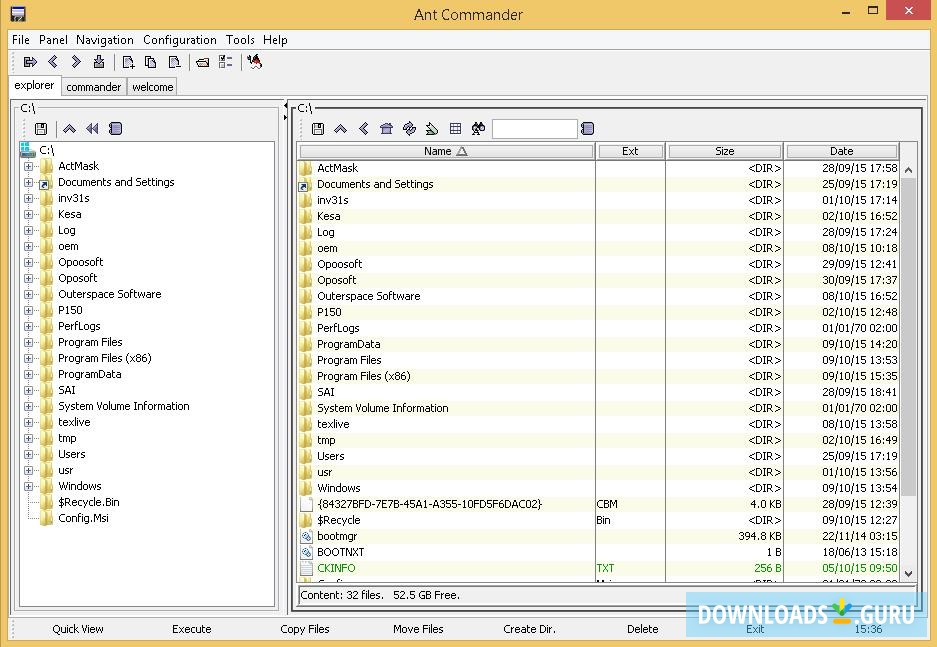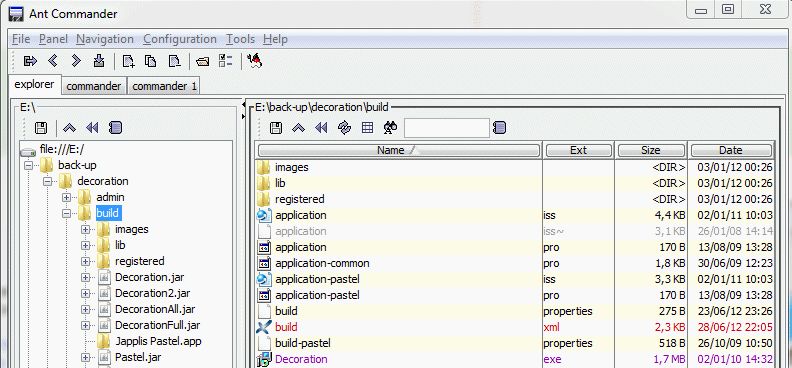Ant Commander is a fully configurable file manager. Several file systems are suported: file, zip, ftp, and webdav. Several kinds of panels are available: directory table; directory tree, text. Having purchased this antenna to add 80m to my capabilities,as i had @ the time a steppir urban-beam for 40-6 m,that decided to not tune, first setup of the Dx Commander ABV,on a bank holiday Friday(UK) temporary location going through the bands (FT8) one @ a time all OK after first tune on 17m 3 JA Stations worked all in quick succession (20. Play Command Ant Conquer online for Free - POG.COM POG makes all the Y8 games unblocked. Enjoy your favorites like Slope, LeaderStrike, and many more games to choose from. No limits, no blocks, no filters, just the top Y8 games.
Delete
Description
Deletes a single file, a specified directory and all its files and subdirectories, or a set offiles specified by one or more resourcecollections. The literal implication of <fileset> is that directories arenot included; however the removal of empty directories can be triggered when using nested filesetsby setting the includeEmptyDirs attribute to true
. Note that this attribute ismeaningless in the context of any of the various resource collection types that do includedirectories, but that no attempt will be made to delete non-empty directories in any case. Whethera directory is empty or not is decided by looking into the filesystem—include or excludepatterns don't apply here.
If you use this task to delete temporary files created by editors and it doesn't seem to work,read up on the default exclusion setin Directory-based Tasks, and see the defaultexcludes attributebelow.

For historical reasons <delete/> is differentfrom <delete><fileset/></delete>; it will try to removeeverything inside x
including x
itself, not taking default excludes into account,blindly following all symbolic links. If you need more control, use anested <fileset>.

Parameters

| Attribute | Description | Required |
|---|---|---|
| file | The file to delete, specified as either the simple filename (if the file exists in the current base directory), a relative-path filename, or a full-path filename. | At least one of the two, unless nested resource collections are specified |
| dir | The directory to delete, including all its files and subdirectories. Note: dir is not used to specify a directory name for file; file and dir are independent of each other. Warning: Do not set dir to ., ${basedir}, or the full-pathname equivalent unless you truly intend to recursively remove the entire contents of the current base directory (and the base directory itself, if different from the current working directory). | |
| verbose | Whether to show the name of each deleted file. | No; default false |
| quiet | If the specified file or directory does not exist, do not display a diagnostic message (unless Apache Ant has been invoked with the -verbose or -debug switches) or modify the exit status to reflect an error. When set to true, if a file or directory cannot be deleted, no error is reported. This setting emulates the -f option to the Unix rm command. Setting this to trueimplies setting failonerror to false. | No; default false |
| failonerror | Controls whether an error (such as a failure to delete a file) stops the build or is merely reported to the screen. Only relevant if quiet is false. | No; default true |
| includeemptydirs | Whether to delete empty directories when using filesets. | No; default false |
| includes | Deprecated. Use resource collections. Comma- or space-separated list of patterns of files that must be deleted. All files are relative to the directory specified in dir. | No |
| includesfile | Deprecated. Use resource collections. Name of a file; each line of this file is taken to be an include pattern. | No |
| excludes | Deprecated. Use resource collections. Comma- or space-separated list of patterns of files that must be excluded from the deletion list. All files are relative to the directory specified in dir. | No; defaults to default excludes or none if defaultexcludes is no |
| excludesfile | Deprecated. Use resource collections. Name of a file; each line of this file is taken to be an exclude pattern | No |
| defaultexcludes | Deprecated. Use resource collections. Whether to use default excludes. | No; default true |
| deleteonexit | Indicates whether to use File#deleteOnExit() if there is a failure to delete a file. This causes the JVM to attempt to delete the file when the JVM process is terminating. Since Ant 1.6.2 | No; default false |
| removeNotFollowedSymlinks | Whether symbolic links (not the files/directories they link to) should be removed if they haven't been followed because followSymlinks was falseor the maximum number of symbolic links was too big. Since Ant 1.8.0 | No; default false |
| performGCOnFailedDelete | If Ant fails to delete a file or directory it will retry the operation once. If this flag is set to trueit will perform a garbage collection before retrying the delete. Setting this flag to true is known to resolve some problems on Windows (where it defaults to true) but also for directory trees residing on an NFS share. Since Ant 1.8.3 | No; default trueon Windows and trueon any other OS |
Examples
Delete the file /lib/ant.jar.

Neverwinter bind commands. Delete the lib directory, including all files and subdirectoriesof lib.
Delete all files with the extension .bak from the current directory and anysubdirectories.
Apache2 forward http to https. Delete all files and subdirectories of build, including builditself.

Visual studio 2019 intellisense. Delete all files and subdirectories of build, without build itself.
Ant Commander
Delete the Subversion metadata directories under src. Because .svn ison of the default excludes you have to usethe defaultexcludes flag, otherwise Ant won't delete these directories and the files init.
